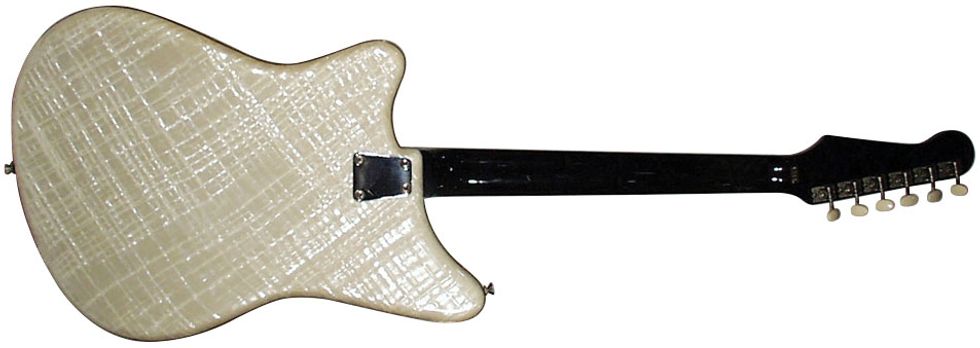Hey Zach,
Back in the early 2000s, I bought this Eko sparkle-top guitar as a quasi-investment (’50s Strats were too expensive for my blood), thinking it fell into that cool 1960s guitar movement, with an awesome finish. I really don’t know much about Eko guitars, except a web search says they are still around, but how has my investment done over the past 15 years?
Thanks,
Jim in Toledo, Ohio
Hey Jim,
No doubt this is a cool-looking guitar (and a great color), but coolness rarely translates into desirability and collectability. That’s such a rare combination to find on vintage guitars. You are also correct that Eko is still around today, nearly 60 years after they began building guitars. So, let’s talk a little about the company’s history and how your investment is doing.
Eko’s history as a guitar maker started in 1959, but the company’s founder, Oliviero Pigini, was involved in the Italian music industry for many years before that—most notably with accordions. When World War II came to a close, many of the accordions Pigini was making were sent to America for distribution. One of those distributors was Lo Duca Brothers in Milwaukee, Wisconsin, which sold accordions, sheet music, and other musical items, but had also expanded into guitars and amplifiers by distributing the Magnatone line by the late 1950s.
When Pigini sensed the guitar boom coming, he started out by building traditional acoustics and small archtop guitars in Italy. As the electric-guitar market began to grow, the company looked to produce solidbodies as well. So, Pigini traveled to the U.S. and teamed up with the Lo Ducas to develop a line of electric guitars. The Lo Ducas acted as technical designers and provided input on Eko designs, and Eko continued to build the guitars in Italy with Lo Duca Brothers serving as the exclusive dealer in the U.S.
Your guitar, the 500/3V, comes from Eko’s popular 500 series produced in the early 1960s. There were quite a few variations of the 500 series, including different pickup configurations and the option of vibrato or non-vibrato. Because model names were based on their configuration, we know by name that your 500/3V has three pickups and a vibrato tailpiece. And with sparkle finishes, mother-of-pearl backs, and an abundance of switches, I think there’s little doubt that an accordion-making background influenced the design!
As the 1960s progressed, Eko moved towards more traditional finishes on their guitars, and they also built guitars for other companies, including Vox and Goya. By 1967, Eko had established dealers in nearly 60 countries, but it was also the same year Oliviero Pigini died from a heart attack.
When the guitar market began to soften in the late 1960s, and competition increased from Japan and other countries, Eko (along with many others) felt the pinch. Some companies went out of business or moved production overseas, but Eko instead scaled down and cut back on the number of models they offered. They were able to stay in business and focused more on keyboards and organs.
A mother-of-pearl back isn’t something one sees often, or ever, but it certainly hints at the accordion-design roots behind Eko.
The company’s popular line of Ranger acoustics came out in the 1970s, and artists such as Gerry Rafferty, Jimmy Page, and Mike Rutherford were all seen playing Eko guitars. Eko continued to produce guitars until 1985, and, remarkably, all in Italy up to that point. Oliviero’s brother, Lamberto, later took over the company and, with plans to revive the Eko brand, he released a line of Czech Republic-built guitars called “Eko’s Back” in 2000. Since then they have slowly increased production and reintroduced the Eko brand to consumers and artists alike.
I’m guessing (and hoping) you paid $500 or less for this guitar in the early 2000s. Today this guitar is worth between $700 and $850 in excellent condition. Looking back at historical pricing, it really hasn’t changed much in 15 years. Investing in guitars—or practically anything else—is more luck than science at times. Collectible guitars need a combination of desirability, originality, and uniqueness. (Think of ’58 to ’60 Les Paul ’bursts, which have all three.) Eko built a lot of guitars and your model certainly looks a lot like another brand’s guitar. And while the finish is cool and the pickup configurations are innovative, it hasn’t reached collector status today. Still, you have an interesting piece of history that at least is holding its value!


















